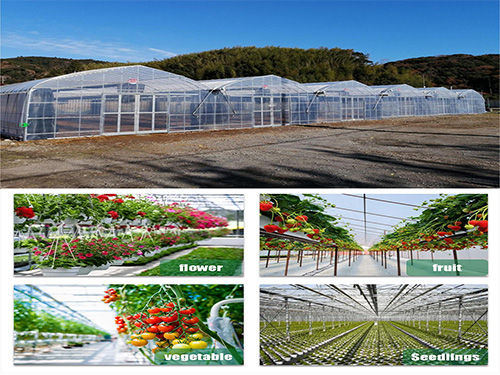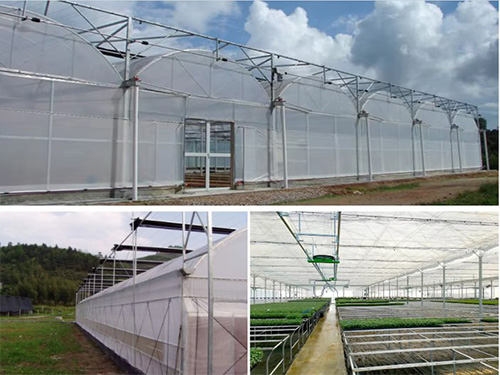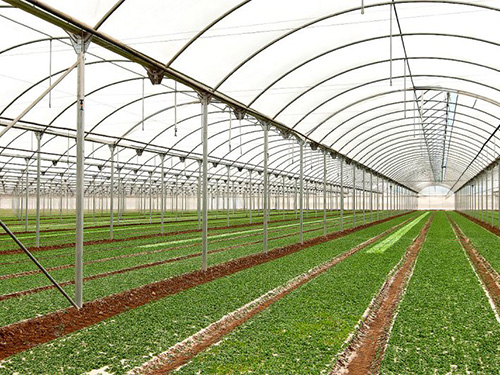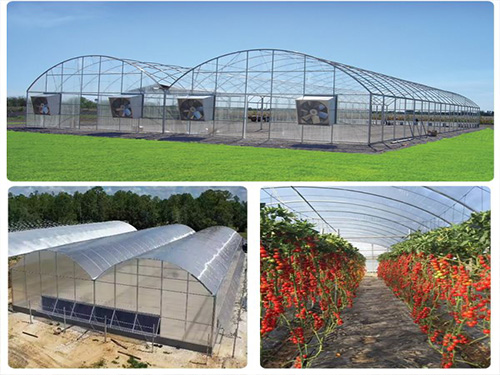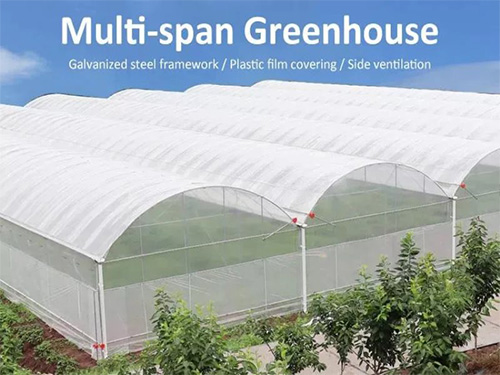NEWS DETAILS
NEWS INFORMATION
Efficient Greenhouse Lighting Control Systems: Enhancing Crop Photosynthesis
AUTHOR:jyxd-greenhouse DATE:2025-01-24 22:31:22 HITS:128
Greenhouses provide an ideal environment for growing crops by controlling temperature, humidity, and light levels. Among these, light is a critical factor that influences plant growth and development. Efficient greenhouse lighting control systems play a vital role in optimizing crop photosynthesis, improving yields, and reducing energy consumption. In this article, we will explore the importance of lighting control in greenhouses, how it impacts photosynthesis, and the latest technologies that enhance crop production.
The Importance of Light for Crop Photosynthesis
Photosynthesis is the process by which plants convert light energy into chemical energy, enabling them to produce food for growth and reproduction. Light, along with carbon dioxide and water, is a key component of this process. In a greenhouse, providing the right amount and quality of light is crucial for maximizing photosynthesis and ensuring healthy crop development.
1. Impact of Light Intensity
The intensity of light affects the rate of photosynthesis. Too little light can slow down the process, leading to weak and stunted growth, while too much light can cause damage to plant cells, resulting in sunburn and poor yields. Greenhouses with efficient lighting control systems can adjust light intensity to match the plants' needs, ensuring optimal growth conditions.
2. Light Spectrum and Crop Growth
The light spectrum refers to the different wavelengths of light that plants use during photosynthesis. Plants primarily use blue and red light for photosynthesis, with blue light promoting vegetative growth and red light encouraging flowering and fruiting. Greenhouse lighting control systems can provide the appropriate light spectrum by using specialized LED lights to meet the specific needs of various crops at different growth stages.
3. Photoperiod and Plant Development
The duration of light exposure, or photoperiod, also influences plant growth. Some plants require long days (more light) to flower and fruit, while others need shorter days to initiate flowering. By controlling the photoperiod in a greenhouse, growers can manipulate plant cycles and optimize the timing of harvests.
Key Components of Efficient Greenhouse Lighting Control Systems
To achieve optimal photosynthesis and energy efficiency, greenhouse lighting control systems must incorporate various components that regulate light levels, spectrum, and duration. These components work together to create a controlled environment where plants can thrive, even under varying external lighting conditions.
1. Automated Light Control
Automated light control systems use sensors and timers to adjust the lighting conditions inside the greenhouse. These systems can detect the level of natural sunlight entering the greenhouse and activate supplemental lighting when needed. By using automated systems, greenhouse operators can reduce energy consumption and ensure that plants receive the right amount of light throughout the day.
· Light Sensors: These sensors monitor natural light levels and adjust artificial lighting accordingly. This ensures that plants are not overexposed to light or deprived of it, optimizing photosynthesis and growth.
· Timers: Timers are used to control the duration of light exposure, allowing growers to adjust the photoperiod for different crops. This is especially useful for manipulating flowering cycles or extending the growing season.
2. LED Grow Lights
LED grow lights have become a popular choice for greenhouse lighting due to their energy efficiency, long lifespan, and ability to provide specific light spectra for different plant needs. LED lights emit minimal heat, which is particularly important in a greenhouse setting where excess heat can be detrimental to plant health.
· Customizable Spectra: LED grow lights can be tuned to emit specific wavelengths of light, providing the optimal spectrum for various crops. For example, blue light can be used to encourage leafy growth, while red light is ideal for promoting flowering and fruiting.
· Energy Efficiency: LED lights use significantly less energy than traditional lighting systems, such as incandescent or fluorescent lights. This reduces the overall energy consumption of the greenhouse, leading to cost savings and a more sustainable operation.
3. Dimming Systems
Dimming systems allow growers to adjust the light intensity according to the needs of the plants. By reducing the intensity of lights during cloudy days or at night, energy usage can be minimized while still providing sufficient light for photosynthesis. Dimming also helps reduce heat buildup inside the greenhouse, which is particularly important during hot weather conditions.
· Gradual Dimming: Some dimming systems allow for gradual adjustments in light intensity, preventing sudden changes that could stress the plants. This ensures a more stable growing environment and supports continuous plant growth.
· Adaptive Dimming: More advanced systems use real-time data from light sensors and climate control systems to adjust the light levels dynamically throughout the day. This allows for more precise control and maximizes both energy efficiency and crop productivity.
4. Daylight Harvesting Systems
Daylight harvesting systems use natural light to the maximum extent possible, reducing the need for supplemental lighting. These systems adjust the artificial lighting based on the amount of natural sunlight available, ensuring that crops receive optimal light without wasting energy.
· Daylight Sensors: These sensors measure the amount of incoming sunlight and adjust the artificial lighting accordingly, providing the right amount of light for photosynthesis without over-illuminating the greenhouse.
· Reflective Surfaces: Some systems incorporate reflective surfaces on the walls or ceiling of the greenhouse to redirect natural light to plants, further improving light distribution and reducing the need for artificial lighting.
Benefits of Efficient Lighting Control for Crop Photosynthesis
Implementing an efficient greenhouse lighting control system provides numerous benefits, from enhancing photosynthesis to improving crop quality and reducing operational costs.
1. Improved Photosynthesis and Plant Growth
By ensuring that plants receive the optimal amount and quality of light, greenhouse lighting control systems enhance photosynthesis, leading to healthier plants and faster growth. This results in higher crop yields and improved product quality, which is especially important for commercial growers.
2. Energy Savings
Efficient lighting systems, such as LED lights and automated control systems, reduce the need for excessive lighting and lower overall energy consumption. By providing only the necessary light when needed, growers can achieve significant energy savings, making greenhouse operations more cost-effective and environmentally sustainable.
3. Extended Growing Seasons
With precise control over light levels, greenhouse operators can manipulate the photoperiod and provide optimal growing conditions throughout the year. This allows for extended growing seasons and the ability to grow crops that would otherwise be limited by the natural light conditions of the region.
4. Reduced Heat Stress
Traditional lighting systems can generate a significant amount of heat, which can stress plants and negatively affect their growth. LED lights, on the other hand, emit very little heat, allowing for a cooler environment inside the greenhouse. This helps prevent heat stress, which can damage plants and reduce yields.
Conclusion
Efficient greenhouse lighting control systems are essential for enhancing crop photosynthesis and ensuring healthy, productive plants. By using automated light control, LED grow lights, dimming systems, and daylight harvesting technologies, greenhouse operators can optimize light levels, reduce energy consumption, and improve crop yields. These systems not only support plant growth but also contribute to sustainable farming practices, making them a valuable investment for greenhouse growers seeking to maximize productivity and minimize costs. As the demand for fresh, high-quality produce continues to rise, efficient greenhouse lighting systems will play a crucial role in shaping the future of agriculture.
Hebei Juyou Xinda Greenhouse Facilities Co.,Ltd.
Copyright © 2024-2025 https://www.jyxd-greenhouse.com. All Rights Reserved Hebei Juyou Xinda Greenhouse Facilities Co.,Ltd.Copyright






 Current Location:
Current Location:


